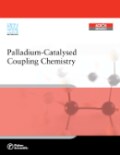Reagents for Synthetic Chemistry

Synthetic Reagents are essential in synthetic chemistry, allowing transformations of building blocks into target molecules quickly, safely and cleanly. A broad range of over 5,000 products are available from the combined Acros Organics and Alfa Aesar portfolios including:
- Organometallics, such as Grignards, organozinc, organolithium and organotin compounds
- Reducing, oxidizing and halogenating reagents
- All the commonly used functional reagents
- Many unusual reagents, less commonly used
- A wide variety of grades and concentrations
- Convenient pack-sizes to suit usage patterns
- Under the Acros Organics brand many of these reagents are offered in our industry-leading AcroSeal™ packaging
Our range of ligands includes 250 products such as Triphenylphosphine, sulfonic acid sodium salts, Ferrocene, 18-Crown-6 and Kryptofix® 222 from product categories including phosphine, Buchwald type, BINAP, NHC and Josiphos ligands.
Phosphonium hexafluoroborates and tetrafluoroborates, offering air stable and safer to use alternatives to the pyrophoric trialkyl phosphines are also available. Our wide choice of monodentate and bidentate ligands is offered in a range of convenient pack sizes ideal for your synthetic chemistry research.
There are over 700 products specifically categorised as organic reagents in the portfolio. Sub-sets of products are taken from all aspects of organic chemistry including reagents used for halogenation, oxidation and reduction. Products are as diverse as relatively simple molecules like acetic anhydride to complex molecules such as EDTA, all with specific functional reagent capabilities to facilitate transformations. Where beneficial, products are available as pre-made solutions, e.g. Glutaraldehyde (both 50% and 25% aqueous solution), Sodium biphenyl in diethylene glycol diethyl ether, (Trimethylsilyl)diazomethane in hexanes, Sodium methoxide in methanol and Borane-tetrahydrofuran complex in THF, alongside high purity products such as Imidazole, Phenol, Sodium borohydride and N-Bromosuccinimide.
-
Reductive Amination
- Reductive Amination (296.8 KB)
-
Oxidation Chemistry
- Oxidation Chemistry (346.8 KB)
Organosilanes have varied uses in organic chemistry from the most frequently employed protecting groups to intermediates in organic synthesis. Look out for the most commonly used products like Tetramethylsilane, tert-Butyldimethylchlorosilane, Triisopropylsilane, 3-Glycidoxypropyltrimethoxysilane and N,O-Bis(trimethylsilyl)trifluoroacetamide amongst the complete Acros Organics and Alfa Aesar portfolios of organosilanes, with products used in four of the most important applications:
- Silyl Protecting and Derivatisation Reagents 1, 2
- Organosilanes as Reducing Agents 3
- Silanes in Cross-coupling Chemistry 4
- Allylsilanes Used to Stabilize α-Carbanions and β-Carbocations4
Organometallic reagents are widely used in organic synthesis. Typical applications include their use as strong bases, as nucleophiles, in metal exchange reactions and as reducing agents. Examples of such reagents include n-Butyllithium, Diisobutylaluminium hydride, Hexamethylditin, Titanium(IV) n-butoxide, Methylmagnesium bromide, Octacarbonyldicobalt and Sodium 1-heptanesulfonate monohydrate amongst the broad categories of Grignard reagents, organolithiums, organozincs and lithium amide bases.
-
Acro Seal Products List
- Acro Seal Products List (432.5 KB)
AcroSeal
What set AcroSeal apart? No accidental removal, adhesive-free sealing for less risk of contamination, better reseal, longer product, higher package integrity and more! Explore the features of the innovative AcroSeal to see how using this simple packaging means letting your researchers focus on research.
Many reagents do not fall easily into the five specific categories listed, such as Tetrabutylammonium hydroxide, Trifluoroacetic anhydride, Oxalyl chloride, Polyvinylsulfuric acid potassium salt, and Poly(propylene glycol). Over 450 'other reagent' products covering a wide range of applications are available.
When carrying out synthetic organic chemistry, exposing many solvents and reagents to air and moisture inhibits their ability to perform properly and can cause some, if not all, of the following issues:
- A failed synthesis
- Poor yield
- Greater number of by-products/impurities
- More challenging purification
Our AcroSeal packaging solution is innovative and simple as we endeavour to:-
- Pack the product when it is as dry as possible
- Make it easy to keep it dry when transferring from the packaging into your dry system
- Ensure products stay dry between repeated use
As well as the challenge of keeping air and mositure out of the reaction system, the highly reactive reagents often required in organic synthesis may be hazardous to use, including compounds that can be pyrophoric, toxic, carcinogenic, mutagenic, corrosive and odourous e.g. thiols. AcroSeal packaging also provides a safer solution for handling these reagents by allowing removal of the reagent from the bottle under an inert atmosphere and without exposure to the contents.
-
AcroSeal packaging
AcroSeal packaging: Your Solution for Air and Moisture Sensitive Organometallic Reagents
- AcroSeal packaging (1.3 MB)








